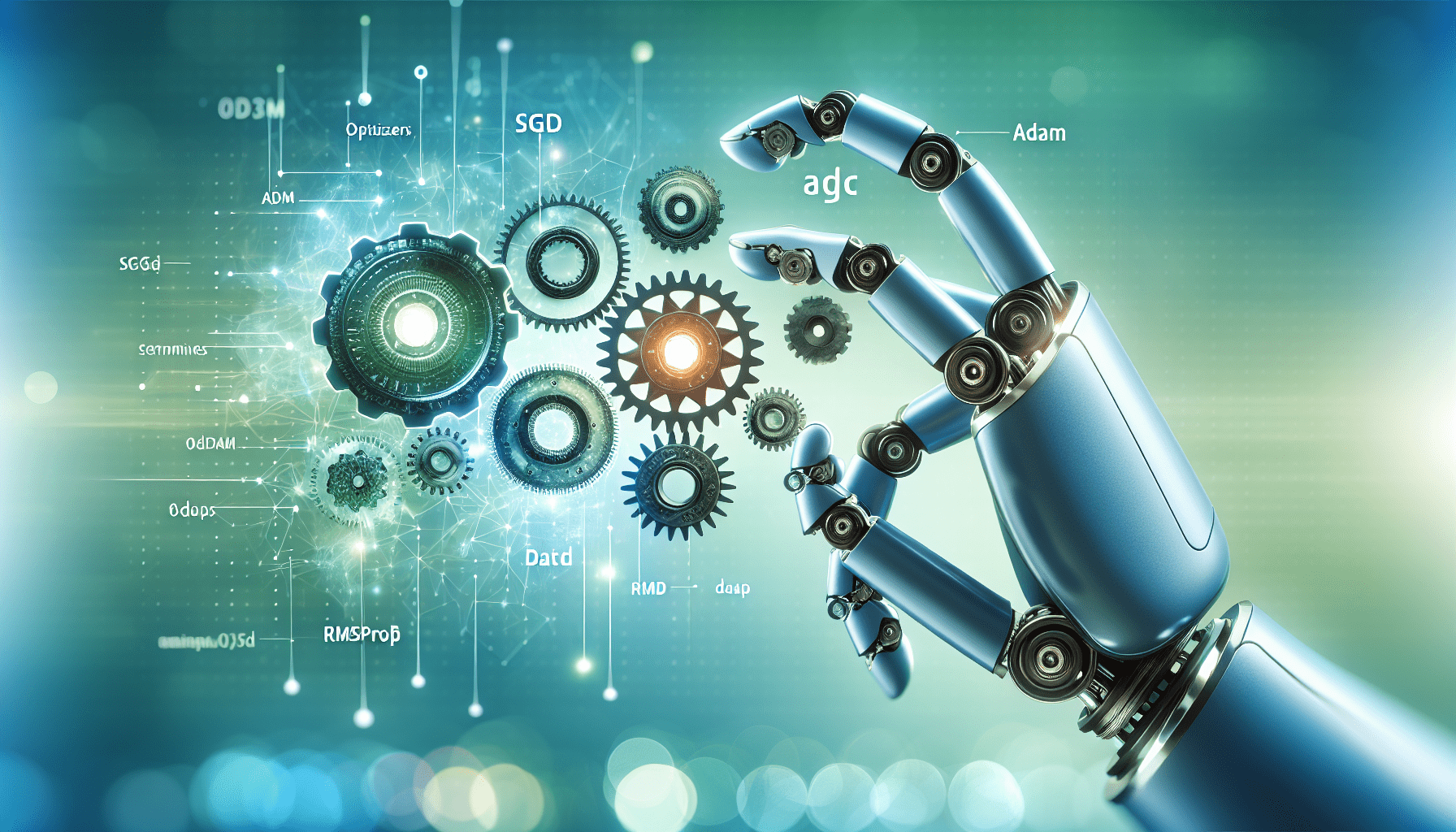Have you ever wondered how machine learning models learn and optimize their performance?
In the realm of data science, understanding optimizers is pivotal to your success. Whether you’re just starting your journey or looking to refine your skills, grasping the nuances of optimizers like SGD, Adam, and RMSProp can elevate your modeling game. Let’s dive into these essential concepts and how they can impact your work in data science.
What Are Optimizers?
Optimizers are algorithms that adjust the parameters of your machine learning model to minimize the loss function. By minimizing this loss, you enhance your model’s performance, ensuring it makes accurate predictions on unseen data. If you’re working with deep learning frameworks or even classic models, understanding how optimizers work is critical for achieving optimal results.
Optimizers do all the hard work behind the scenes to ensure your model learns effectively. They decide how much weight to give to each training sample and determine how quickly the model should learn. Your choice of optimizer can significantly impact your model’s learning path, convergence speed, and ultimately its performance.
The Role of an Optimizer
In simple terms, an optimizer is like a guide on a journey. It helps your model find the best route to an optimal solution through the vast landscape of data. When training your model, you want to reach the lowest point of the loss function, analogous to a traveler seeking the path of least resistance.
Why They’re Important
Optimizers are crucial for several reasons:
- Efficiency: They help speed up the learning process by adjusting learning rates dynamically.
- Convergence: They assist in reaching a point where your model achieves minimal loss, which is essential for high accuracy.
- Adaptability: Many optimizers can adjust their strategies based on input data, making them versatile in handling different scenarios.

Stochastic Gradient Descent (SGD)
What Is SGD?
Stochastic Gradient Descent, often shortened to SGD, is one of the most popular optimization algorithms in the field of deep learning. It’s a variant of the traditional gradient descent algorithm that updates the weights of the model using a single sample at a time instead of the entire dataset.
How Does SGD Work?
SGD computes the gradient of the loss function with respect to each parameter in the model on a single training example. Then, it updates the parameters using the following formula:
[ \theta = \theta – \eta \cdot \nabla J(\theta) ]
Where:
- ( \theta ) represents the parameters,
- ( \eta ) is the learning rate,
- ( \nabla J(\theta) ) is the gradient of the loss function.
By treating each example independently, SGD can potentially escape local minima and navigate the optimization landscape more effectively.
Advantages of SGD
- Efficiency: This method can be computationally less expensive than batch gradient descent since it processes one sample at a time.
- Faster Convergence: It often provides faster convergence for large datasets, as it allows the model to update weights more frequently.
Disadvantages of SGD
- Noisy Updates: The updates are noisy because they depend on single samples, which can lead to the fluctuation in convergence.
- Hyperparameter Sensitivity: It is sensitive to the choice of learning rate and can require careful tuning.
A Typical SGD Workflow
- Shuffle your training data.
- For each epoch:
- Select a mini-batch of samples.
- Compute the gradient of the loss function.
- Update the model parameters.
Adam Optimizer
What Is Adam?
Adam, short for Adaptive Moment Estimation, revolutionizes the way optimizers adapt learning rates during the training process. It combines the benefits of two other extensions of stochastic gradient descent: AdaGrad and RMSProp.
How Does Adam Work?
Adam keeps track of two moving averages for each parameter:
- The first moment (mean of gradients).
- The second moment (uncentered variance of the gradients).
The updates to the parameters are governed by the following equations:
-
Calculate gradients: [ m_t = \beta_1 m_ + (1 – \beta_1) \nabla J(\theta) ] [ v_t = \beta_2 v_ + (1 – \beta_2) (\nabla J(\theta))^2 ]
-
Bias correction: [ \hat = \frac ] [ \hat = \frac ]
-
Update parameters: [ \theta = \theta – \alpha \frac{\hat}{\sqrt{\hat} + \epsilon} ]
Where:
- ( m_t ) and ( v_t ) are the first and second moment vectors respectively,
- ( \beta_1 ) and ( \beta_2 ) are hyperparameters usually set to 0.9 and 0.999,
- ( \epsilon ) is a small constant to prevent division by zero.
Advantages of Adam
- Adaptive Learning Rates: Adam adjusts the learning rate for each individual parameter, which helps in navigating the loss landscape efficiently.
- Less Memory Requirement: It only requires a small amount of memory storage compared to other adaptive optimizers.
- Faster Convergence: Generally leads to faster convergence than both SGD and RMSProp, making it especially popular in practice.
Disadvantages of Adam
- Tuning Complexity: The choice of hyperparameters, particularly learning rates, can affect performance significantly.
- Suboptimal Performance: In some cases, Adam may lead to suboptimal final performance compared to SGD, particularly for certain structured models.

RMSProp
What Is RMSProp?
RMSProp is another adaptive learning rate method that stands out by maintaining a moving average of the squared gradients to normalize the gradient. This helps to adjust the learning rates considering the individual parameters’ magnitudes.
How Does RMSProp Work?
The working of RMSProp can be summarized in the following steps:
-
Calculating the decay average: [ E[g^2]t = \beta E[g^2] + (1 – \beta) g_t^2 ]
-
Updating the parameters: [ \theta = \theta – \frac{\alpha}{\sqrt} g_t ]
Where:
- ( g_t ) represents the gradient,
- ( \beta ) is typically set to 0.9,
- ( \epsilon ) is a small constant.
Advantages of RMSProp
- Handles Non-Stationary Objectives: RMSProp works well for problems where the loss function is non-stationary.
- Adaptive Learning Rates: Like Adam, RMSProp also adapts the learning rates for different parameters based on their averages.
Disadvantages of RMSProp
- Requires Hyperparameter Tuning: It still requires careful tuning of hyperparameters to obtain optimal results.
- Can Get Stuck: It may still get stuck in local minima under certain circumstances.
Key Differences Between SGD, Adam, and RMSProp
| Feature | SGD | Adam | RMSProp |
|---|---|---|---|
| Update Style | Fixed learning rate | Adaptive learning | Adaptive learning |
| Memory Requirement | Low | Medium | Low |
| Convergence Speed | Medium | Fast | Fast |
| Handling Sparse Gradients | Poor | Good | Good |
| Best Use Cases | Large datasets | Most applications | Non-stationary objectives |
Choosing the Right Optimizer
When deciding which optimizer to utilize in your model, several factors come into play. Ask yourself:
- The nature of your data: Are you working with large datasets or smaller ones? Is the data sparse?
- The complexity of your model: Is it a simple linear model or a complex neural network?
- Time constraints: Do you need faster convergence for time-sensitive projects?
If you’re working on large datasets with simple models, SGD could be advantageous. However, for more complex architectures, Adam or RMSProp may present better solutions due to their adaptive nature.

Practical Considerations
When putting your knowledge into practice, keep these points in mind:
- Experimentation Is Key: Don’t hesitate to test different optimizers on your specific problem. Sometimes empirical results speak louder than theory.
- Monitor Learning Curves: Visualize the training and validation loss curves to understand how well your model is learning and whether it’s overfitting.
- Batch Size Matters: Adjusting the batch size can have implications on training speed and convergence. With larger batch sizes, SGD can behave more like conventional gradient descent, while small batch sizes can add noise to the optimization process.
- Learning Rate Scheduling: Consider employing learning rate schedules or decay methods to improve training stability and performance.
Conclusion
Understanding and selecting the right optimizer is essential for the success of your machine learning models. SGD, Adam, and RMSProp each offer distinct advantages and potential drawbacks that can significantly affect your results.
Ultimately, the optimizer you choose should align with the specific requirements of your dataset and modeling task. As you refine your skills in data science and machine learning, don’t underestimate the power of choosing the right optimization strategy.
By continuously testing and adjusting your approach, you’ll be well-prepared to tackle a diverse range of machine learning challenges. Remember, the journey of learning is just as important as the destination, so embrace the process and keep experimenting!

